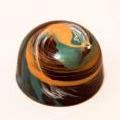-
Welcome to the eG Forums, a service of the eGullet Society for Culinary Arts & Letters. The Society is a 501(c)3 not-for-profit organization dedicated to the advancement of the culinary arts. These advertising-free forums are provided free of charge through donations from Society members. Anyone may read the forums, but to post you must create a free account.
Making Caramel Sauce
-
Similar Content
-
Making Tempeh
By gfron1,
- 10 replies
- 1,149 views
-
Peanut Sauce 1 2
By Shel_B,
- 34 replies
- 4,481 views
-
- 341 replies
- 75,657 views
-
- 106 replies
- 33,783 views
-
- 3,634 replies
- 413,148 views
-
-
Recently Browsing 0 members
- No registered users viewing this page.





Recommended Posts